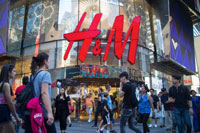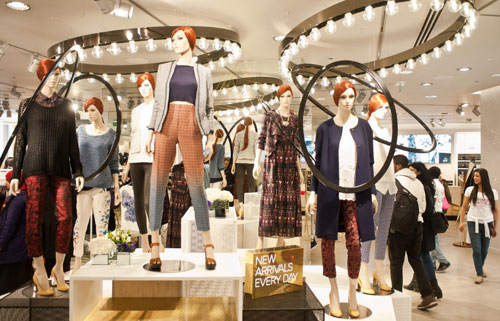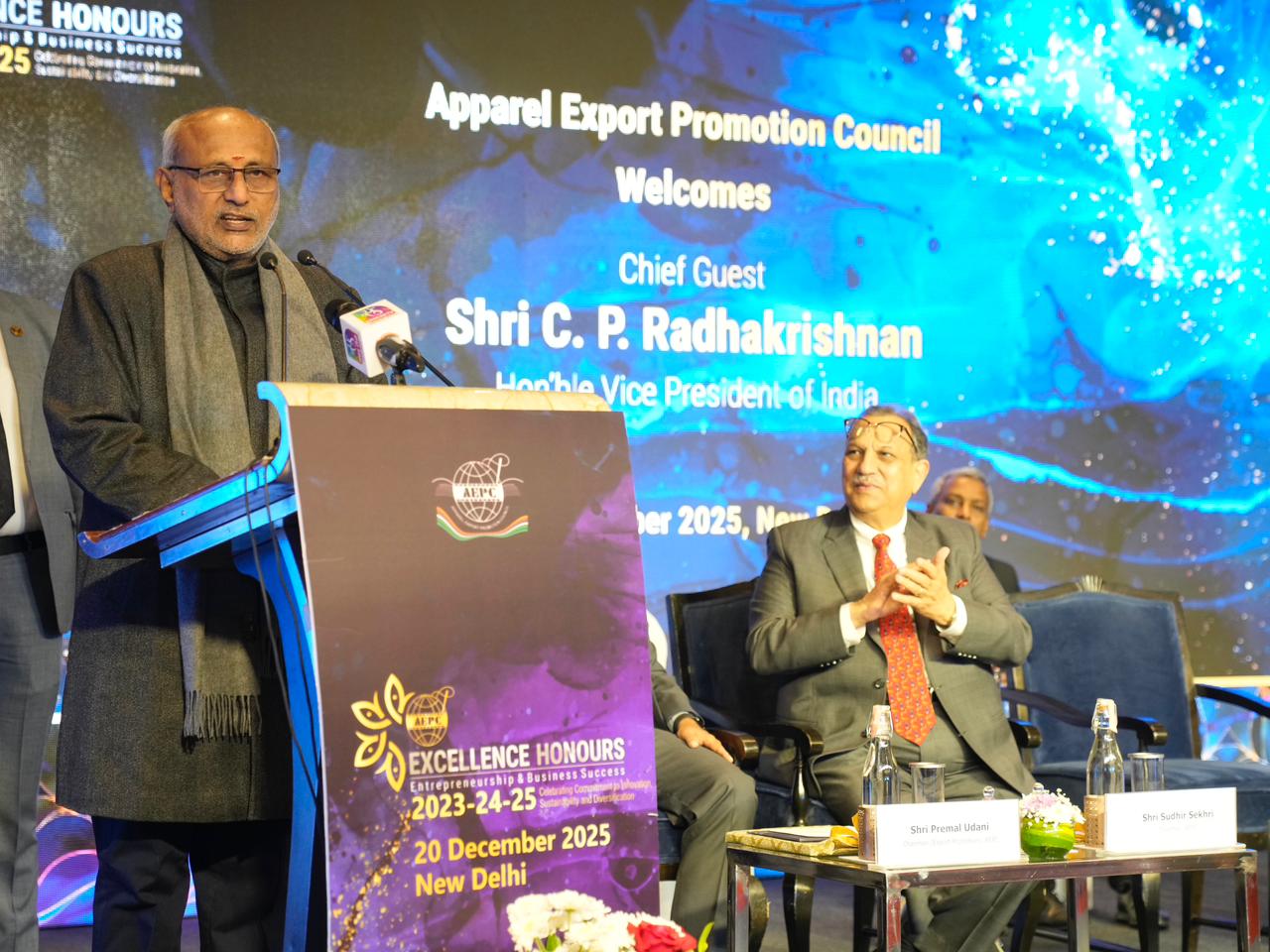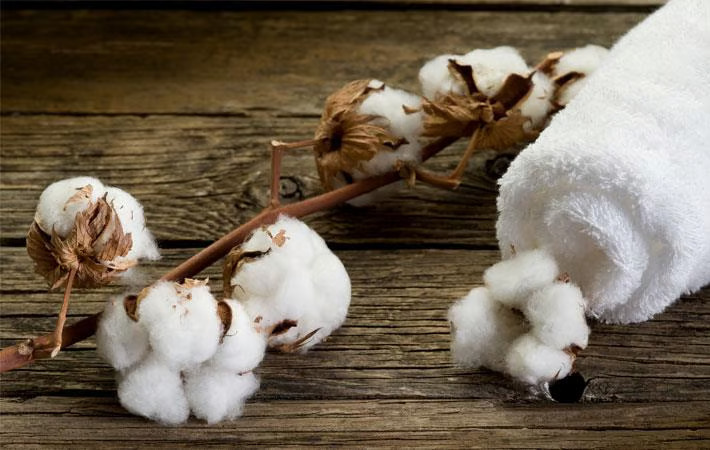FW
Jeanologia is keen to guide technological reformation of Indonesia’s textile industry. The Spanish company, specialising in development of sustainable technology for garment finishing, revealed its latest developments recently.
Currently, Indonesia generates 2 per cent of global jeans and wants to harness innovation and technology to use throughout its textile industry to attract big fashion brands and become competitive with other Asian countries. As per the company while to finish a denim garment, an average 70 liters of water is required, with the new technique the amount is reduced to a single glass.
For Fernando Pérez-Narbon, area manager at Jeanologia, achieving sustainable production is possible through innovation and technology. In the automotive sector, the company has been able to reduce fuel consumption and carbon dioxide emissions thanks to innovation and the same is happening in the textile sector: with technology, it is reducing water consumption and pollution, she added.
Currently the Spanish company has clients in five continents and the export of its machines and services represents 90 per cent of its turnover. The company has an international presence in 50 countries.
GTE (Garment Technology Expo) is having its maiden show in Gujarat, August 18 to 20, 2017.
Gujarat is popularly termed as the textile state of India and Ahmedabad is the hub of the garment and made-up fabrication of the western region. Gujarat is a one-point sourcing hub for all kinds of textiles, with one of the largest concentrations of textiles in India.
The show will showcase the ever growing and dynamic and vibrant industry of Gujarat. GTE initiated in 2001 and has already conducted successfully 24 editions across the nation.
The fair will have exhibits like sewing machines, knitting machines, embroidery machines, digital textile printing and fabric and accessories.
The biggest industry show in the subcontinent, GTE is patronized by trade professionals who include manufacturers, exporters, institutions and other volume consumers.
Besides owners, CEOs, MDs and production heads who visit to see, compare and negotiate deals for new machinery, designers, technical supervisors, shop floor managers visit to update themselves on new technologies, materials, the latest product launches and new innovations at GTE.
GTE showcases the latest machines and processes. Nearly 85 per cent of the participants from the initial editions of GTE continue to be steadfast. New innovations, product launches, product upgrades, live demonstrations, new materials etc. are the cornerstone of each successive show.
Garment workers in Myanmar are struggling to cover everyday living costs while factory owners enjoy the surge in demand from global fashion brands. The minimum wage barely covers the cost of food. Ten years in the garment industry, workers live in dorms and can’t afford a place of their own.
Most garment workers report working up to 11 hours a day, six days a week. There are horror stories like workers choosing not to drink too much water so they don’t have to use the bathroom as they will miss out on bonuses. Workers face bad working conditions and health. There is an overwhelming number of workers who don’t know their rights. A report from Burma’s Women Union, published some months ago, revealed workers from nine factories that supply H&M, Marks and Spencer and C&A who face a cycle of poverty and debt.
Garment manufacturers are moving from Bangladesh and China to take advantage of cheaper labor in Myanmar. Many business owners view the minimum wage – which is the second lowest in the region after Bangladesh – as a maximum price rather than a floor price. They prefer paying the minimum wage rather than a living wage.
The biggest issue that workers report is companies’ blatantly ignoring labor laws. This has resulted in a rise of workers’ protests, which is starting to see results. Still many fear losing their job for raising their voice. That is why NGOs like international women’s organisation The Circle is calling for fashion brands to acknowledge the right to a living wage as a fundamental human right. They are calling for a global pact among brands taking responsibility to pay workers a fair wage in the factories they use.
The Turkish ready-to-wear industry is entering the US market. A 4,000 sq ft showroom is opening in the heart of New York’s garment district where 10 different Turkish brands and showrooms will be organized at the center, targeting American fashion and ready-to-wear companies. Brands and manufacturers will exhibit their products from street fashion and maternity clothing to women’s knitwear and denim.
The US is the biggest ready- to-wear importer in the world. Turkish fashion and design products that give East- West synthesis an important place in its designs is expected to have a stronger space in the American fashion market where concepts such as diversity, inclusiveness are on the rise.
Exporting ready-to-wear clothing is better for Turkey financially compared to exporting just cotton. Turkey’s apparel and textile industry has been a powerful engine for Turkey’s economy, roughly ten per cent of the entire GDP, and now the country is looking to expand that success by expanding exports to as many countries as possible.
Turkey is among select few countries that mandates all its textile manufacturers comply with internationally accepted environmental standards. As an example, unlike many Far East and Asian countries, Turkey bans the use of carcinogenic dyes. This results in more environmentally safe products.
Most US fashion manufacturers and retailers prefer to source from China.
Some 91 per cent of them source from China.
Vietnam is the second go-to sourcing spot.
Bangladesh has been a popular sourcing destination because of its low-cost labor, but there are compliance issues with that country’s factories. So only 32 per cent of US fashion industry executives expect to increase their sourcing there.
While duty-free imports are critical for keeping costs down, most of the 19 free-trade agreements the United States has with other countries are underutilized. Only the North American Free Trade Agreement is used by a significant proportion of US manufacturers.
What is worrying US business is the tariff their country is threatening to impose on imports from major US trading partners. American manufacturers are opposed to the US border adjustment tax that would tax imports and subsidize exports.
Second on their list of concerns is competition from e-commerce sites that are cutting into bricks-and-mortar store sales. Some 57 per cent of them are worried about the growth of companies such as Amazon and new entrants to online sales. They feel bricks-and-mortar stores are still an important source for shoppers.
Only 71 per cent of US fashion industry executives feel optimistic about the future, down from 92.3 per cent surveyed last year.
A space station in the US will provide up to a million dollars in funding to scientists and researchers who can come up ways to make cotton farming more effective and sustainable. The space station is Center for the Advancement of Science in Space (CASIS). In other words an orbiting laboratory is assisting in better farming practices. Some of the ways in which the station could help in the effort include using the station's high-altitude vantage point, which could provide the agricultural community with unique perspectives on sustainable crop production and water use. Or scientists could use the microgravity environment on the station to study how cotton crops respond to different environments and conditions.
CASIS is encouraging researchers to submit proposals in areas of fluid dynamics, fluid flow, cotton and plant germination. The world produces more than 25 million tons of cotton a year, To produce just a kilogram of cotton requires between 10,000 to 20,000 liters of water.
While the economic and personal benefits of cotton are well-understood, the environmental impacts of cotton production are significant. The intensive use of agricultural chemicals in cotton farming and production can have severe health impacts on workers and the surrounding ecosystems.
Manhattan Beachwear has a partnership with F1 Generation by which the latter will represent Manhattan Beachwear's brand portfolio in all 23 major EU territories. Manhattan Beachwear, founded in 1946, is an American swimwear and beach accessories company. It designs, manufactures, and markets under license for Kenneth Cole, Kenneth Cole Reaction, Lucky Brand, Lauren Ralph Lauren, Polo Ralph Lauren, Chaps, Trina Turk, Nanette Lepore, Sperry Top-Sider and Hobie.
In addition, Manhattan Beachwear also designs, manufactures and markets proprietary brands La Blanca, 24th & Ocean, Maxine of Hollywood, The Bikini Lab, Green Dragon and Pink Lotus. Manhattan Beachwear's swimwear is sold throughout the US, Canada, Mexico, Australia, and the UK. The company also operates a subsidiary in Portugal, which supplies swimwear to the European market.
F1 Generation, based in Germany, distributes more than 30 brands with a special concentration in swimwear and intimate apparel. Besides offices in Cologne, the company has subsidiaries in the UK and Spain. F1 maintains accounts in all key department stores, online retailers and better specialty stores throughout Europe. With a keen sense for new trends and popular labels F1-Generation is the perfect partner for the distribution of Manhattan Beachwear's premier proprietary and licensed brands in the European market.
CX+ Sport has been confirmed as the new apparel partner for Athletics Ireland. The partnership will see CX+ Sport supply Athletics Ireland with a full selection of team wear, including performance apparel for all international competitions. The firm will also supply training kit and leisurewear for medal ceremonies, travelling and public appearances.
The new CX+ Sport kit was worn by Irish athletes for the first time at the European U23 Track and Field Championships which took place in Poland last week. Athletics Ireland is the national governing body for athletics in Ireland. The primary objective is to promote and develop the sport at every level from recreational running and school competitions through to supporting Ireland’s elite athletes in international competitions.
CX+ Sport is an Irish sportswear company offering advanced technology and performance enhancing garments. Having provided equestrian apparel for riders and horses for over 20 years, CX + Sport will use its knowledge of fabric technology to produce a world class range for athletics. With focus on design and technology, CX + Sport produces high quality technical garments for athletes. The company currently provides team kit and leisure wear to over 300 clubs including Irish League clubs, rugby clubs, and basketball clubs.
India's cotton textile exports have fallen 10 per cent over the last three fiscals. Shipments of cotton textiles from India stood at Rs 70,936 crores during 2016-17 as against Rs 72,994 crores in the previous financial year and Rs 71,913 crores in 2014-15. Cotton textiles comprise cotton yarn, other textile yarn, fabrics, made-up articles, cotton raw waste and cotton fabrics and made-ups, which include products like bed sheets, blankets and curtains.
Export of cotton at present is under the open general license. India is among the largest producers and exporters of cotton textile products. India exports cotton textiles to Russia, UK, Australia, Sri Lanka, Iran, Germany, Belgium, Italy etc. The cotton textile industry requires raw cotton as the principal raw material and chemicals like caustic soda, dyes, arrowroot or starch etc. Cotton growing regions are Maharashtra, Gujarat, Karnataka, Tamil Nadu, etc.
However, cotton textile industry in India faces some problems. Long staple cotton is not well grown in many parts of India. Many of the factories are old and, as such, productivity has been lowered. Plants and machinery employed in many textile mills are out of date. There is competition from synthetic fibers like polyester etc. The high cost of production is retarding the growth of the industry.
"The concept of ‘fast fashion’ has ignited a media frenzy and intense backlash for the wide scale ramifications it has through its supply chain. This phenomenon has occurred over several decades, with the onset and expansion of globalisation. As trade barriers began to soften, major brands had the freedom to jump from one country to the next in pursuit of cheaper labor and materials."
 The concept of ‘fast fashion’ has ignited a media frenzy and intense backlash for the wide scale ramifications it has through its supply chain. This phenomenon has occurred over several decades, with the onset and expansion of globalisation. As trade barriers began to soften, major brands had the freedom to jump from one country to the next in pursuit of cheaper labor and materials.
The concept of ‘fast fashion’ has ignited a media frenzy and intense backlash for the wide scale ramifications it has through its supply chain. This phenomenon has occurred over several decades, with the onset and expansion of globalisation. As trade barriers began to soften, major brands had the freedom to jump from one country to the next in pursuit of cheaper labor and materials.
The International Labour Organisation (ILO) estimates there are around 170 million children engaged in child labour worldwide. This is a particular issue in the fashion industry as the majority of the supply chain requires low-skilled labour, with some tasks even considered better suited to children than adults. In cotton picking, for example, employers prefer to hire children for their small fingers, which do not damage the crop.
The fashion industry supply chain is intricately complex and spread vastly across many countries, making it difficult for retailers to control every stage of production. Sadly, this makes it possible for manufacturers to employ children and labourers in immoral conditions without brands and consumers ever finding out or facing adequate consequences.
difficult for retailers to control every stage of production. Sadly, this makes it possible for manufacturers to employ children and labourers in immoral conditions without brands and consumers ever finding out or facing adequate consequences.
Negative impact of fast fashion on the environment
Water pollution, the use of toxic chemicals and increasing textile waste are some of other negative impacts that fast fashion has on the planet. The pressure to produce rising volumes of garments at a reduced cost within tight timeframes leads to manufacturers cutting corners in environmental parameters.
A man-made, energy-intensive synthetic fibre commonly used in fashion, Polyester has sparked major controversy for its artificial makeup of micro-plastics, which easily pass through waterways and end up in our oceans. Since these micro-fibres do not disintegrate, every piece of polyester that has ever been made is still in existence today, contributing to large mountains of textile waste dumped in landfills across the globe. In addition, the dyes and toxic chemical components of other low quality textiles such as nylon and acrylic, as well as genetically-modified cotton, release methane, a harmful greenhouse gas and significant contributor to global warming, into the atmosphere when decomposing.
Brands adopt green initiatives
Many companies are introducing sustainable, ethical and ‘green’ initiatives into their overall retail strategy. Swedish brand H&M is publishing the names and addresses of all its factories in each country on the website. The company has outlined a number of sustainability targets in its annual Sustainability Report.
The brand’s Conscious Exclusive Collection – a range that champions 100 per cent recycled and raw materials – has grown from strength to strength. Its in-store Garment Collecting initiative also encourages customers to hand in unwanted clothing, from any brand and in any condition, all-year round.
Another brand, G-Star RAW, alongwith H&M has signed a Transparency Pledge. The pledge was drawn up by coalition of global unions and labour rights groups advocating for companies in the fashion industry to make information about their manufacturing supply chain accessible to the public. The brand has also incorporated a Fair Wage Project into their supply chain, which continually seeks to ensure workers are paid a living wage.
While cannot change people’s capitalistic conditioning, we can look at sustainability as a catalyst for innovations. Retailers can embrace responsible and ethical sourcing initiatives by utilising technology for their production processes.












